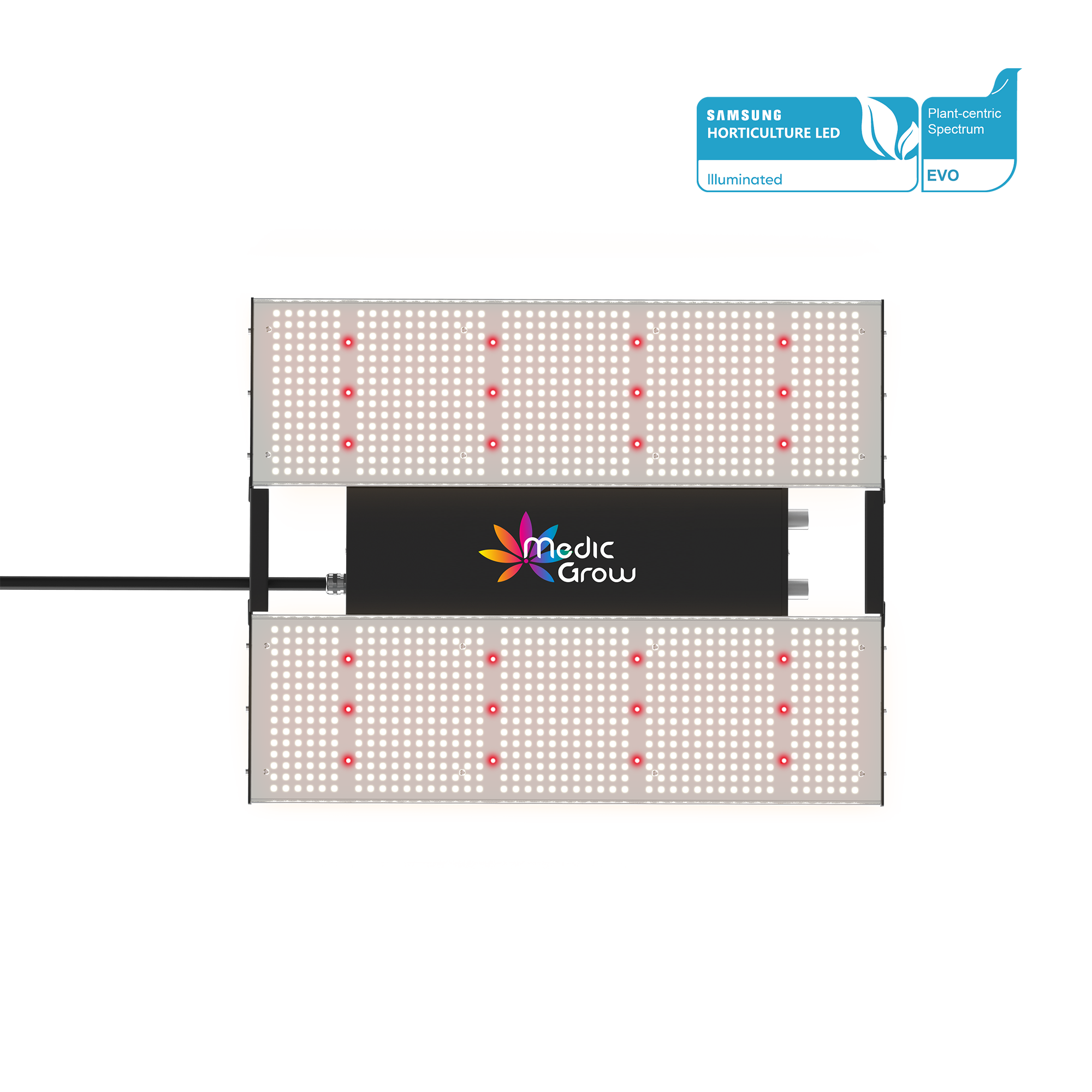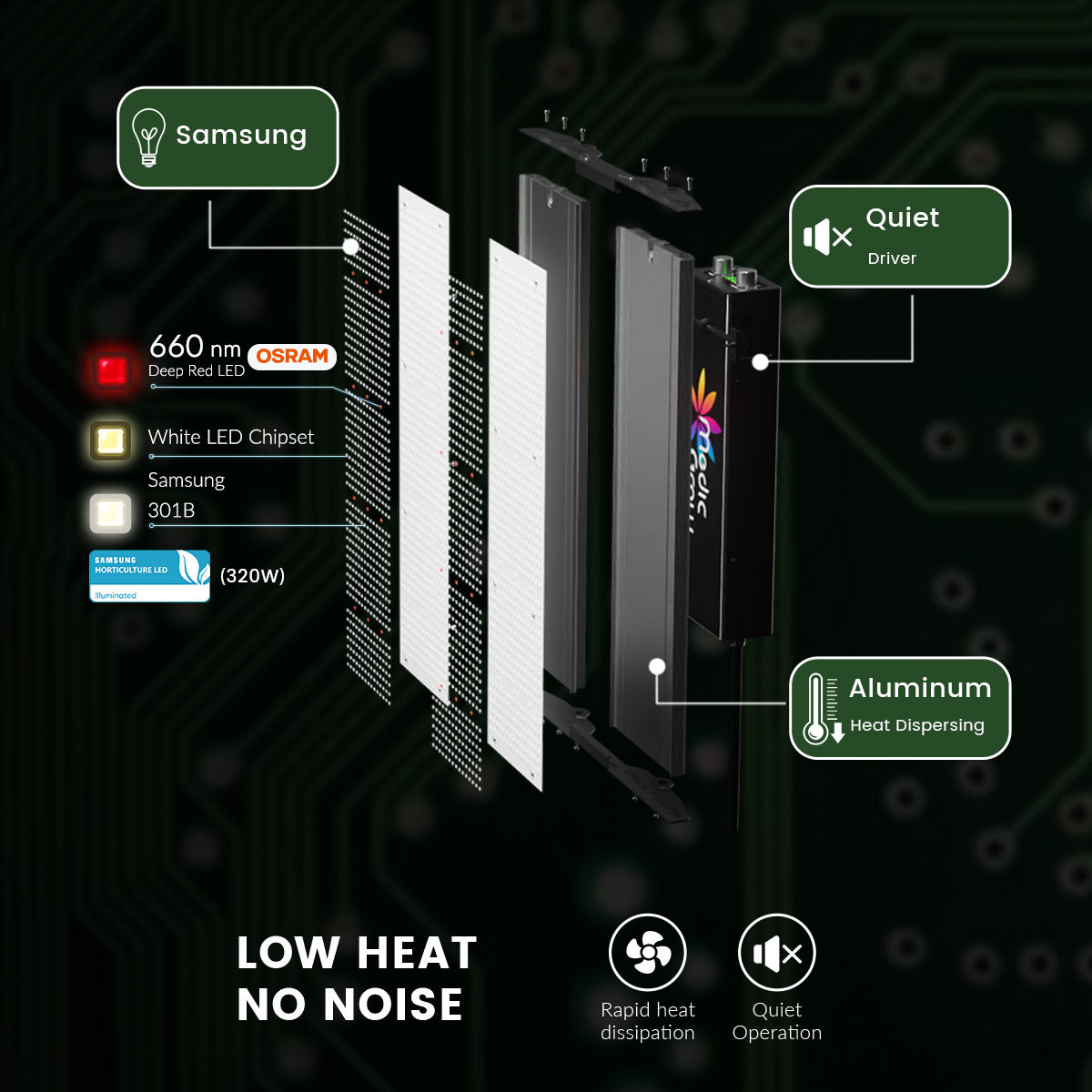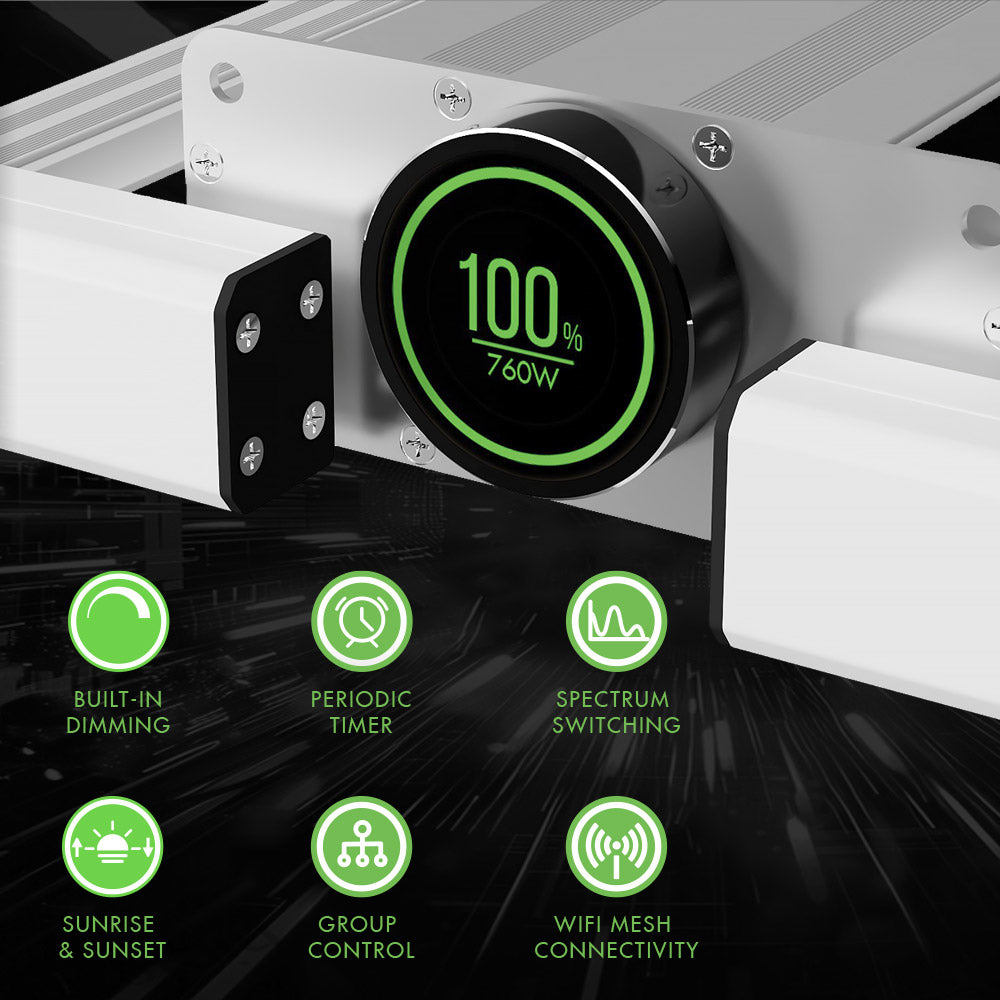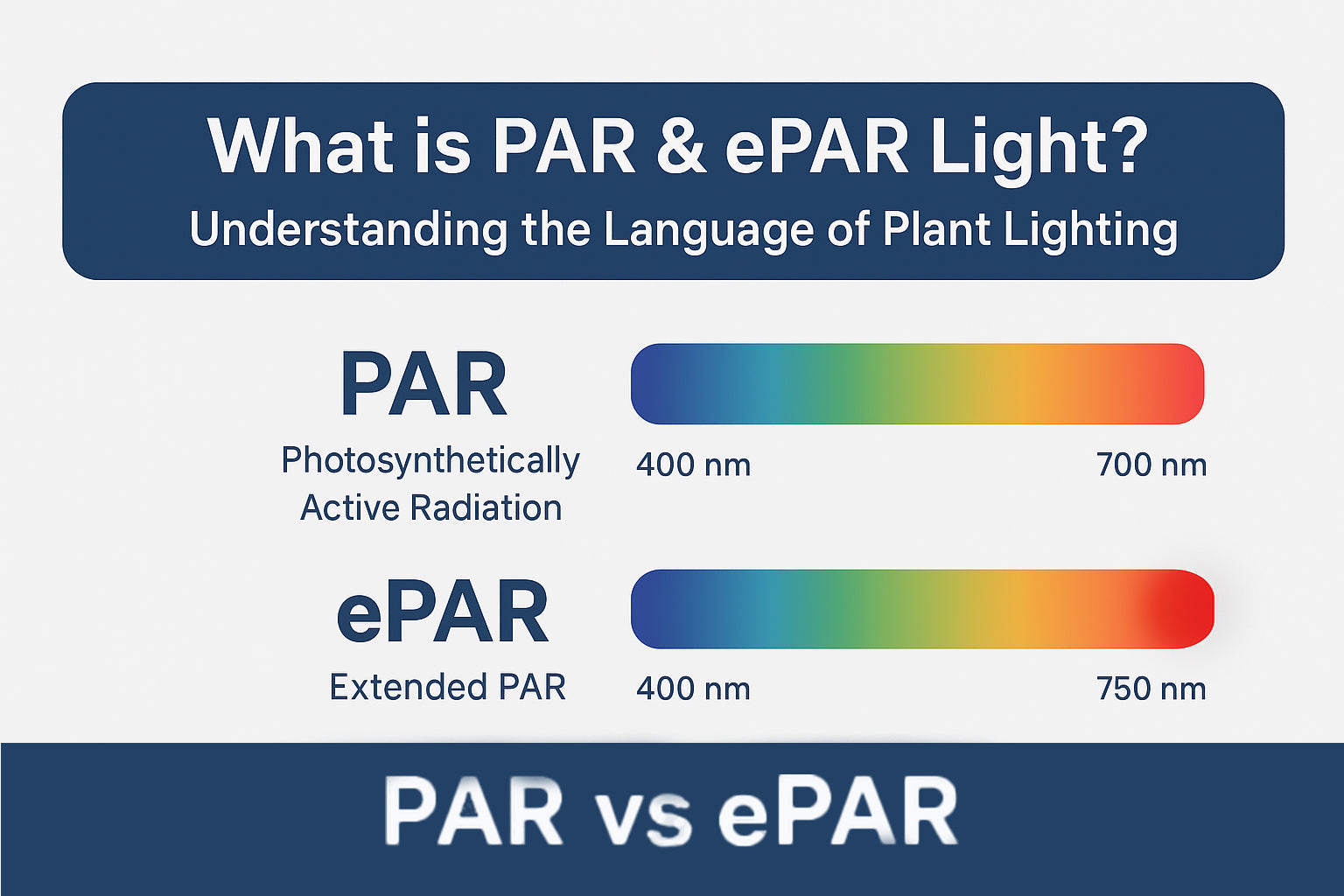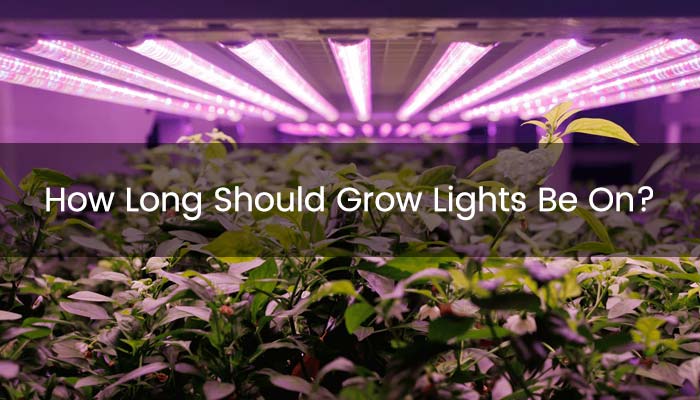
How Long Should Grow Lights Be On?
Like humans, plants need to rest in the dark and perform various metabolic activities to thrive. For most plants, 12 to 16 hours of light per day is sufficient, but do not exceed 18 hours. This reduces electricity bills and mimics sunlight to maximize healthy growth, flowering and fruiting.
We will guide you through how much light is enough for indoor plants and how long should hydroponic light be on in this article, including daily Light Integral (DLI), the effects of blue and red light on light schedule for plants, and the light intensity and light duration needed for different plants. Let's get started.
Main Content:
- 1. How Long Grow Lights Should Be On
- 2. How Much Light Is Enough for Indoor Plants?
- 3. How Long Do You Burn the Hydroponic Light Each Day?
- 4. Other Considerations for Grow Light Schedule
- 5. Conclusion
- 6. FAQs about How Long Should Grow Lights Be On
How Long Grow Lights Should Be On?
Some factors affect how long grow lights should be on for indoor plants including the type and growth stages of the plant, the daily light integral (DLI), and the LED plant grow light’s intensity. Here are how long should grow lights be on for different plant growth stages.
Plants Varieties
Different plant types have different light duration requirements. For example, leafy greens like lettuce and spinach may need 12-14 hours of light, while fruiting plants like tomatoes and peppers may need up to 16-18 hours of light. In addition, short-day plants, long-day plants, and day-neutral plants have specific photoperiod requirements, here are the differences between them.
Short-day plants require shorter day lengths to flower. They typically flower in the fall or winter when the nights are longer and the days are shorter. Typical examples include chrysanthemums, rice, and tomatoes. These plants typically require less than 12 hours of daylight to initiate flowering.
Long-day plants require longer day lengths to flower. They typically flower in the spring or summer when the days are longer. Common examples include wheat, barley, and many vegetables like tomatoes and carrots. These plants generally require more than 12-16 hours of daylight to flower.
Day-neutral plants flower independently of day length and can flower in any photoperiod. Their flowering is primarily affected by other factors such as temperature and humidity rather than light schedule. Examples of day-neutral plants include corn, cucumbers, and most beans.
Some Plants require different light hours at different growth stages. Seedling stages usually require 18-24 hours of light, maintaining 18 hours of light and 6 hours of darkness during the growing period, and reducing light hours to 12 hours of light and 12 hours of darkness as they enter the flowering stage.
In addition to considering the photoperiods of different plant types, you can also calculate the proper light duration based on the daily light integral (DLI) needs of different plants.
Daily Light Integral
The Daily Light Integral (DLI) is a measure of the total amount of light (in mol/m²/day) that plants receive over 24 hours. It directly influences how many hours a grow light should be on because it helps determine the optimal light exposure needed for healthy growth.
How DLI Affects Grow Light Duration?
- Low DLI Requirement: Plants that need lower DLI can thrive with fewer hours of light or lower light intensity. For example, if your plants require a DLI of 10 mol/m²/day, you might achieve this with 12 hours of light at a moderate intensity.
- High DLI Requirement: Plants with higher DLI requirements, such as tomatoes, need more light to reach optimal growth. If your plants require a DLI of 20 mol/m²/day, you might need to extend the light duration to 18-24 hours or increase the light intensity to achieve this target.
If you have powerful LED grow lights that deliver high light intensity, you might meet the DLI target with fewer hours of light. Conversely, with lower-intensity lights, you would need to extend the light duration to reach the same DLI.
Grow Light Intensity
The light intensity of grow lights generally refers to PPFD (Photosynthetic Light Flux Density). Simply put, this is the intensity of light that the plant receives at a certain place and varies from the light distance.
High PPFD values mean that plants can photosynthesize more efficiently in a shorter light period, and therefore the light period can be relatively shortened at higher light intensities. For example, using higher PPFD values (800-1200 µmol/m²/s) during the flowering stage can support the flower development of a plant within 12 hours of light.
Conversely, for seedlings and growing plants, longer light durations (18-24 hours) contribute to healthy plant growth even with lower PPFD values. At these growing stages, while light intensity does not have to be too high, longer light durations can provide enough light energy to support overall plant growth.
However, if the light intensity is higher, will the plant grow faster? No, there is a light intensity threshold that is important for optimal plant growth, so let's read on about how much light is enough for indoor plants.
How Much Light Is Enough for Indoor Plants?
We've learned that light intensity can affect how long should grow lights be on, but please notice that if beyond the PPFD requirement, additional light does not significantly increase the rate of photosynthesis and can even be detrimental, such as causing leaf burns. For this reason, we should control light hanging height and light intensity to maintain a proper PPFD for plants.
This is why we usually recommend purchasing a grow light controller or grow light with a timer such as Medicgrow's Smart-8, which not only controls the light intensity (PPF) but also allows you to set the light duration to provide the best growing conditions for your plants.
In addition to how long should grow lights be on for indoor plants, some may wonder how long should grow lights be on for hydroponics? We explain below how long should grow lights be on for hydroponics.
How Long Do You Burn the Hydroponic Light Each Day?
In hydroponic systems, the light duration for plants varies by growth stage. For seedlings, grow lights should be on for 16 to 18 hours per day to support robust growth and prevent legginess. During the vegetative stage, extending light to 18 to 24 hours per day promotes strong, healthy growth and maximizes vegetative development.
When plants enter the flowering stage, reduce the light duration to 12 hours per day to simulate autumn conditions, which encourages flowering. By following our consistent light schedules can avoid plant stress and ensure proper development. Besides, there are 3 other considerations for a light schedule.
Hydroponic grow lights like Medicgrow are specifically designed for plants grown in hydroponic systems, providing optimized light spectra and features to support plant health in nutrient-rich water environments. They offer customizable wavelengths and high-intensity light to meet the unique needs of hydroponic setups, often featuring water-resistant designs to handle high humidity.
Other Considerations for Grow Light Schedule
Before setting the light schedule for your beloved indoor plants, there are three more things to consider that are also important. This includes the following:
Spectrum of Grow Lights
Different growth light spectra have a significant effect on the amount of light time required by plants. Blue light (450-470 nm) helps plant leaves grow and photosynthesize, and using stronger blues at the seedling and growth stages promotes rapid growth.
Red light (620-660 nm) promotes flowering and fruiting. Increasing the intensity of red light can effectively support the flowering process in plants with shorter light exposure times.
Spectrums with high photosynthetic efficiency, like those in full-spectrum LED grow lights enable plants to complete nutrient uptake and growth processes more quickly, reducing the required light duration.
Notably, specially designed for the plant vegetative stages and flowering stages, Medicgrow's NEO 1000w LED grow light offers two switchable spectrums to maximize the efficiency of plant growth and flowering.
Read Also: Do Indoor Plants Need UV Light?

Image source: Fold-800 Grow Light Spectrum
Light Uniformity
Uniformity of light distribution in indoor planting environments refers to the consistency of light intensity received across the leaf surfaces of plants. Ensuring plants receive even light exposure promotes healthy growth and efficient photosynthesis.
To ensure good light uniformity, growers need to arrange LED grow lights appropriately to ensure that they are evenly distributed in the growing space, and adjust the height and angle of the fixtures according to the height and growth stage of the plants.
When setting up an indoor grow room, you can use reflective materials such as aluminum foil or reflective fabric can increase the efficiency of light usage, redirecting scattered light around the plants to further enhance the uniformity of light.
Regularly monitor your plants' growth status and adjust the position and light intensity of the grow lights to ensure even light distribution. This promotes healthy plant growth and can lead to faster and lusher plants, thus less overall light duration.
In addition, a high-quality grow tent provides more even light and does not leak light. You can get the best deals on grow tent kits at Medicgrow Combo, so you can have both high-quality grow tents and light at the same time.
Plants Need Darkness
Plants perform important metabolic activities at night. Seedlings should have at least 6 hours of darkness per day and mature plants at least 8-10 hours. For this reason, you may need to build your grow room for indoor pants to provide an environment with darkness.
It's important to note that some plants need absolute darkness to go to "sleep", so avoid poor quality grow lights and grow tents that leak light at night. If you want to buy high-quality grow lights and grow tents, go to Medicgrow!
Related article:
How to Use LED Grow Lights for Indoor Plants
When Should You Replace Your Grow Light Bulbs?
Conclusion
In conclusion, you can decide how long should grow lights be on based on the type of plant, daily light integral (DLI), and the intensity of the grow light. With optimal light timing and superior grow light, you can make your plants grow healthy and fast.
FAQs about How Long Should Grow Lights Be On
1. Can You Leave a Grow Light on 24/7?
You can leave a grow light on 24/7 for some plants, but it's not ideal for most. Plants typically benefit from a light and dark cycle, which supports healthy growth and prevents stress.
2. Can I Leave My Grow Light on 24 Hours?
Grow lights should not be left on 24 hours; plants need a balanced light-dark cycle for optimal growth. Continuous light can disrupt the natural balance between photosynthesis and respiration. During darkness, plants convert stored glucose into energy for growth and repair, processes that are essential for their overall health.
3. How Many Hours Should a Grow Light Be On?
The number of hours a grow light should be on depends on the plant's growth stage:
- Seedling Stage: 16-18 hours of light per day.
- Vegetative Stage: 18-24 hours of light per day.
- Flowering Stage: 12 hours of light and 12 hours of darkness per day.
These light schedules help support optimal growth and development at each stage.
4. How Long Should Grow Lights Be on for Seedlings?
For seedlings, grow lights should typically be on for 16 to 18 hours a day. This extended light period promotes healthy growth by providing ample time for photosynthesis, which helps seedlings develop strong roots and sturdy stems. It also prevents seedlings from becoming leggy, a condition caused by insufficient light.
5. How Long Should Hydroponic Light Be On?
Precise control of light timing promotes fast, healthy growth of plants in a hydroponic system plant. The light timing of a hydroponic light depends largely on the growth stage of the plant.
- Seedling stage: 16-18 hours of light per day is needed to support rapid growth and development.
- Vegetative stage: 16-18 hours of light per day is needed to promote strong, healthy growth.
- Flowering stage: 12 hours of light per day is needed to mimic the natural photoperiod and trigger flowering and fruiting.
Maintaining consistent hydroponic light duration is important for hydroponic plant health. Using a grow light with a timer ensures that your hydroponics gets proper light during the day to provide optimal light conditions.
Featured Products
Blog Posts
Contact Us with Any Idea!
- Choosing a selection results in a full page refresh.
!















